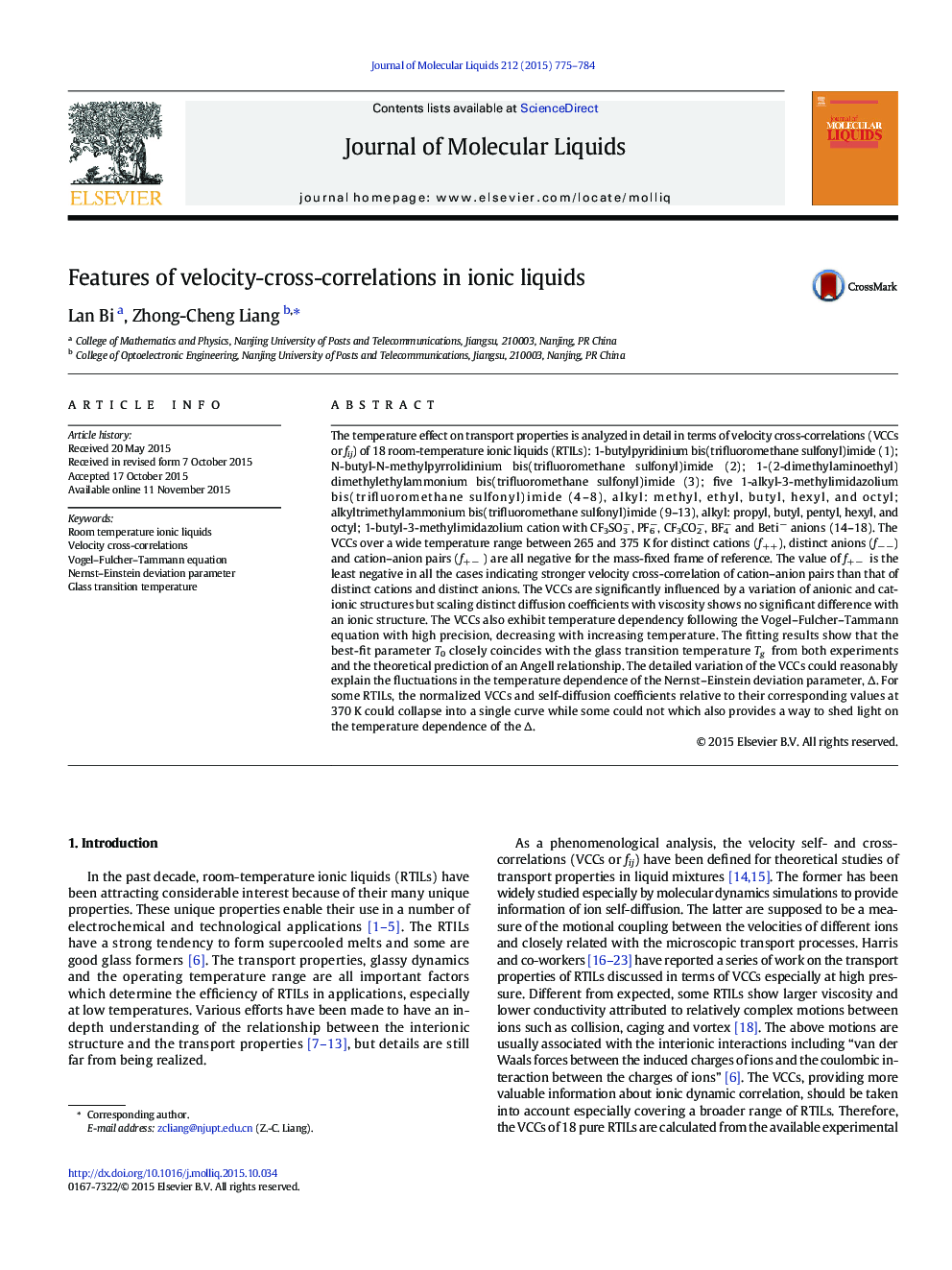| Article ID | Journal | Published Year | Pages | File Type |
|---|---|---|---|---|
| 5410585 | Journal of Molecular Liquids | 2015 | 10 Pages |
Abstract
The temperature effect on transport properties is analyzed in detail in terms of velocity cross-correlations (VCCs or fij) of 18 room-temperature ionic liquids (RTILs): 1-butylpyridinium bis(trifluoromethane sulfonyl)imide (1); N-butyl-N-methylpyrrolidinium bis(trifluoromethane sulfonyl)imide (2); 1-(2-dimethylaminoethyl)dimethylethylammonium bis(trifluoromethane sulfonyl)imide (3); five 1-alkyl-3-methylimidazolium bis(trifluoromethane sulfonyl)imide (4-8), alkyl: methyl, ethyl, butyl, hexyl, and octyl; alkyltrimethylammonium bis(trifluoromethane sulfonyl)imide (9-13), alkyl: propyl, butyl, pentyl, hexyl, and octyl; 1-butyl-3-methylimidazolium cation with CF3SO3â, PF6â, CF3CO2â, BF4â and Betiâ anions (14-18). The VCCs over a wide temperature range between 265 and 375 K for distinct cations (f++), distinct anions (fââ) and cation-anion pairs (f+â ) are all negative for the mass-fixed frame of reference. The value of f+â is the least negative in all the cases indicating stronger velocity cross-correlation of cation-anion pairs than that of distinct cations and distinct anions. The VCCs are significantly influenced by a variation of anionic and cationic structures but scaling distinct diffusion coefficients with viscosity shows no significant difference with an ionic structure. The VCCs also exhibit temperature dependency following the Vogel-Fulcher-Tammann equation with high precision, decreasing with increasing temperature. The fitting results show that the best-fit parameter T0 closely coincides with the glass transition temperature Tg from both experiments and the theoretical prediction of an Angell relationship. The detailed variation of the VCCs could reasonably explain the fluctuations in the temperature dependence of the Nernst-Einstein deviation parameter, Î. For some RTILs, the normalized VCCs and self-diffusion coefficients relative to their corresponding values at 370 K could collapse into a single curve while some could not which also provides a way to shed light on the temperature dependence of the Î.
Related Topics
Physical Sciences and Engineering
Chemistry
Physical and Theoretical Chemistry
Authors
Lan Bi, Zhong-Cheng Liang,
